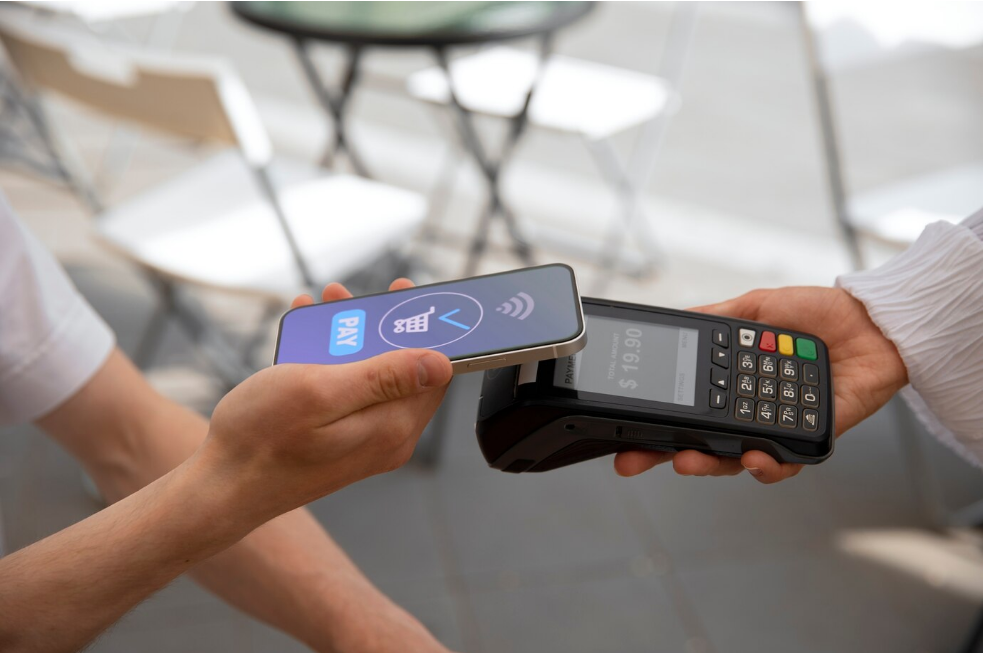A Comprehensive Guide to Near Field Communication (NFC)

Imagine effortlessly paying for your morning latte with a simple tap of your phone, or unlocking your apartment door with a quick touch. That’s the power of Near Field Communication (NFC), a rapidly evolving technology transforming how we interact with the world around us.
This blog post dives deep into NFC, explaining its functionalities, applications, and the exciting possibilities it holds for the future.
Demystifying NFC: A Technological Breakdown
NFC operates on the foundation of Radio-Frequency Identification (RFID) technology, but with a shorter range and enhanced security features. Here’s a simplified breakdown of how NFC facilitates contactless communication:
- Induction Coupling: When two NFC-enabled devices are brought close together, a magnetic field is established. This field acts as a bridge, enabling data transmission between the devices.
- Data Modes: NFC can operate in three distinct modes, depending on the situation:
- Peer-to-Peer (P2P): Two active devices like smartphones can exchange data bi-directionally, perfect for sharing photos or contacts with a friend.
- Reader/Writer: An active device like your phone can read data from a passive tag, such as an NFC poster containing information or a discount code.
- Card Emulation: Your phone transforms into a secure virtual card, enabling contactless payments through services like Apple Pay or Google Pay.
A World of Possibilities: Exploring NFC Applications
The versatility of NFC extends across various industries, transforming how we navigate our daily lives:
- Effortless Payments: Ditch the bulky wallet! Use your NFC-enabled phone for secure and speedy contactless payments at stores equipped with NFC readers.
- Public Transport Breeze: No more waiting in line for tickets. Simply tap your phone on designated terminals at bus stops or train stations for a hassle-free commute.
- Seamless Access Control: Imagine using your phone as a key! Gain secure entry to offices, buildings, or even hotel rooms with just a tap on NFC-enabled access control points.
- Effortless Data Sharing: Sharing photos, contacts, or other data between devices is as easy as a tap. No more struggling with Bluetooth pairing or fumbling with cables.
- Interactive Marketing: Say goodbye to static posters! Scan NFC tags embedded in posters or displays to access product information, exclusive discounts, or even hidden content like behind-the-scenes videos.
- Smart Homes: Simplify smart home management by configuring new devices or triggering actions with an NFC tap. Imagine setting the lights to a specific mood or adjusting the thermostat with a simple tap on your phone.
NFC vs. Bluetooth and Wi-Fi: Understanding the Key Differences
While NFC shares some similarities with Bluetooth and Wi-Fi, there are crucial distinctions to consider:
| Feature | NFC | Bluetooth | Wi-Fi |
| Range | Up to 4 cm (1.5 in) | Up to 10 meters (33 ft) | Up to 100 meters (330 ft) |
| Connection Speed | Up to 424 kbit/s | Up to 3 Mbps (Bluetooth 5.0) | Up to 11 Gbps (Wi-Fi 6) |
| Power Consumption | Low | Moderate | High |
| Security | High | Moderate | Moderate |
| Ideal for | Payments, data sharing | File transfer, headphones | Internet access |
The Allure of NFC: Unveiling its Advantages
NFC offers a unique set of benefits that make it a compelling technology:
- Enhanced Security: Data transmission is encrypted, ensuring secure communication between devices.
- Convenience: Contactless interaction makes NFC incredibly fast and user-friendly. No more fumbling for cash or searching for misplaced keys.
- Low Power Consumption: NFC is ideal for battery-powered devices like smartphones, as it requires minimal power to operate.
- Simple Setup: Forget complex pairing procedures. With NFC, a simple tap establishes a connection.
A Glimpse into the Challenges: Limitations of NFC
While powerful, NFC technology does have some limitations to consider:
- Short Range: For NFC to work, devices need to be in very close proximity, typically within a few centimeters of each other.
- Slower Data Transfer: NFC is not ideal for transferring large files like movies or music due to its limited data transfer speed.
Additional Resources:
- NFC Forum: https://nfc-forum.org/ (Provides industry insights and resources related to NFC technology)
- How to Use NFC on Android Phones: https://squareup.com/us/en/the-bottom-line/selling-anywhere/android-phone-nfc-payments (A guide on enabling and using NFC on Android devices)
- How to Use Apple Pay: https://support.apple.com/en-us/HT201239 (Information on using Apple Pay, a popular NFC-based mobile payment service)